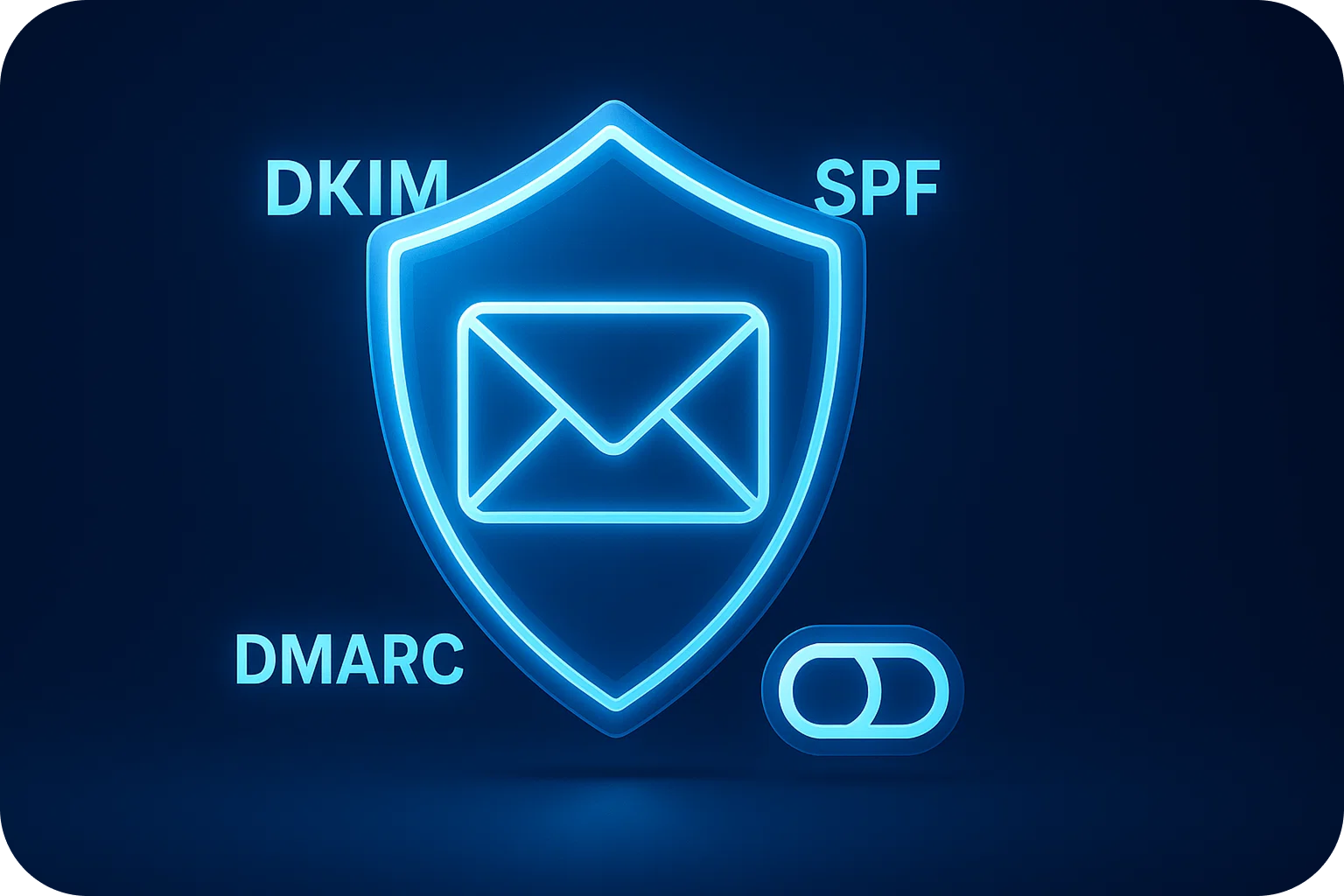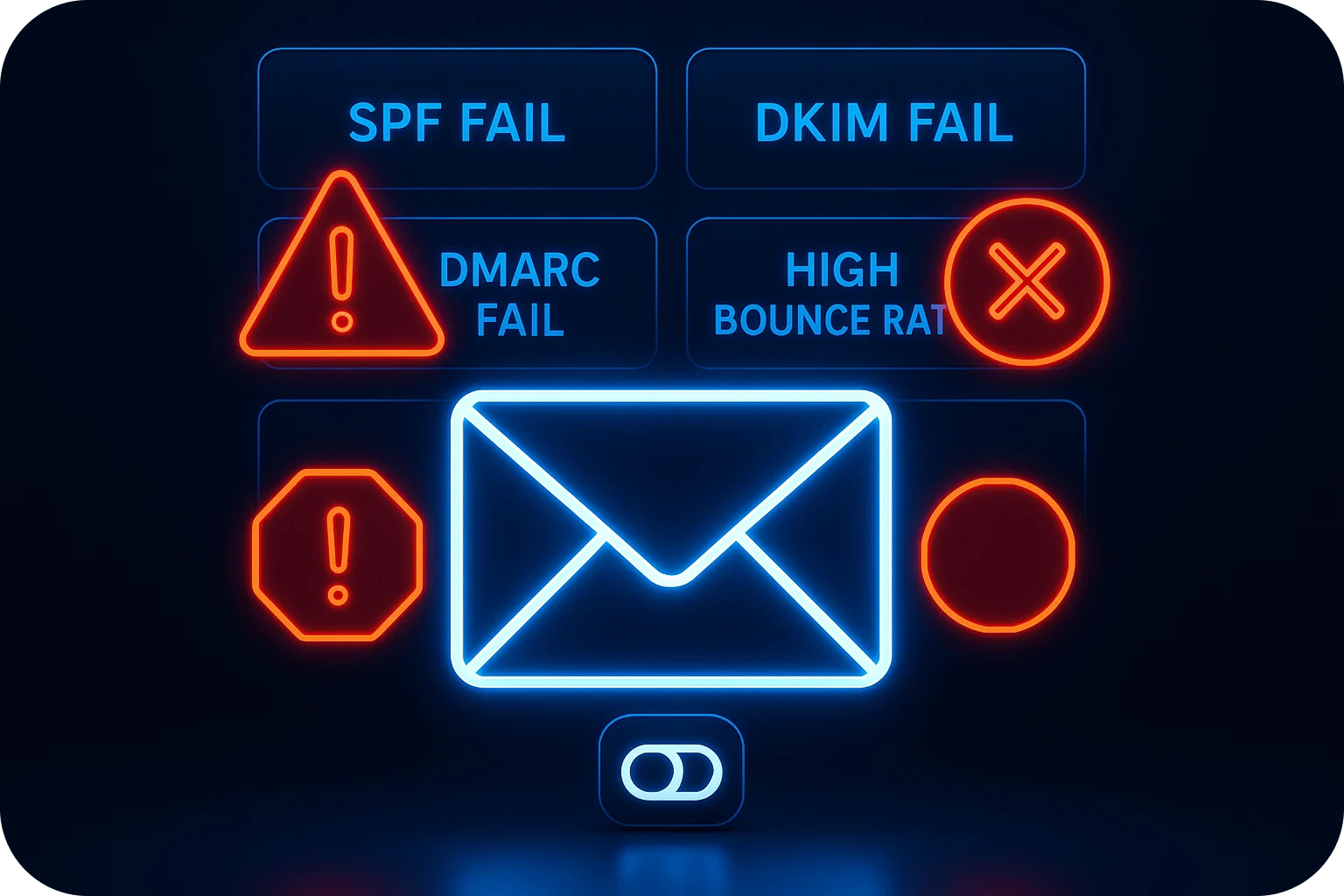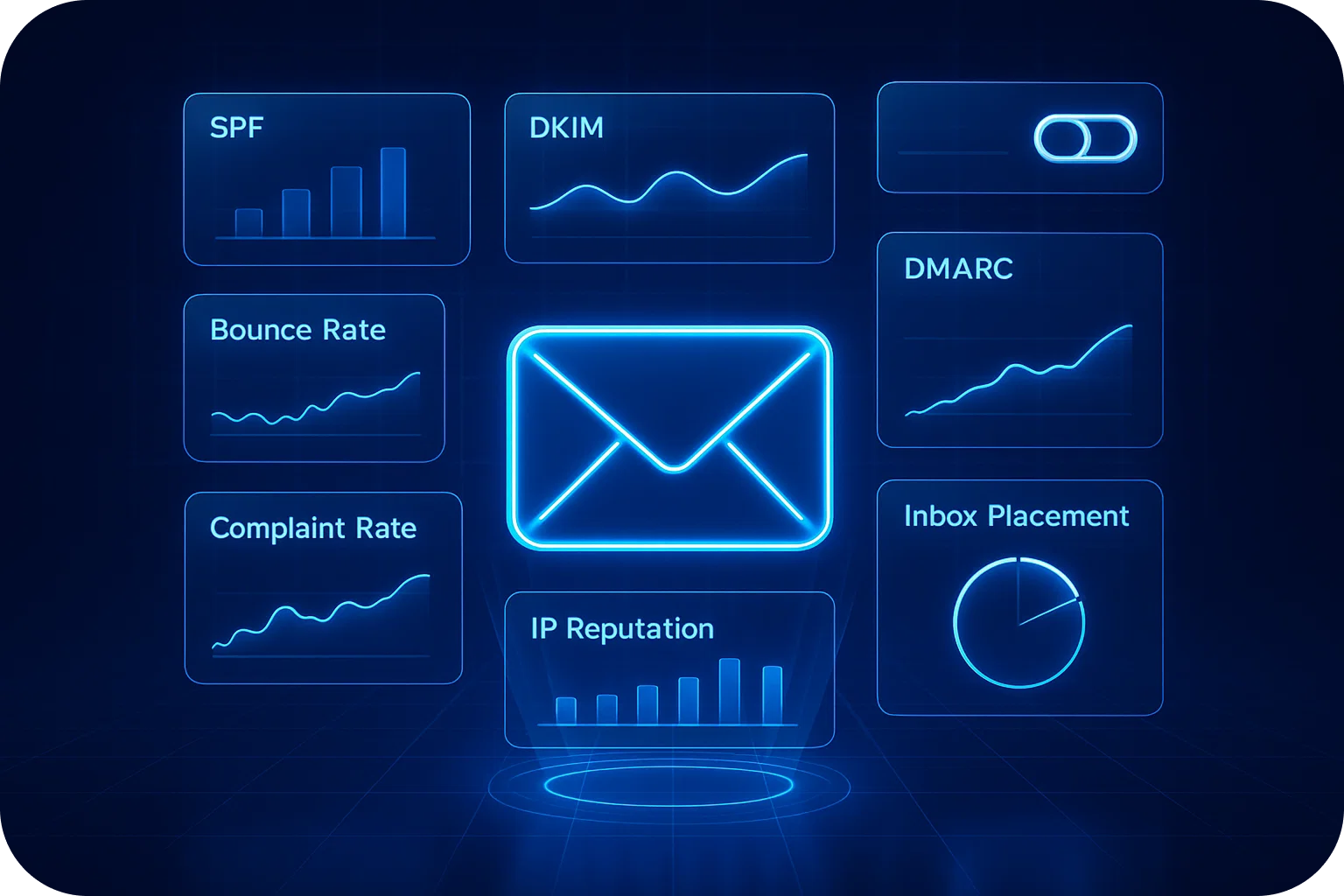The Reply Rate Multiplier: How Email Infrastructure Quality Impacts Conversion

You've perfected your cold email copy. Your targeting is laser-focused. Your offer is compelling. Yet your reply rates remain stubbornly low. The problem isn't your message; it's whether anyone actually sees it.
Email infrastructure quality acts as a multiplier effect on every other element of your cold email strategy. Even the most brilliant campaign generates zero replies if it lands in spam. Understanding this relationship is the difference between scaling successfully and burning through prospects with nothing to show for it.
The Infrastructure-Reply Rate Connection
Cold email metrics don't exist in isolation. Your response rate is the final output of a chain of dependencies, and email infrastructure sits at the foundation of that chain. When infrastructure quality is poor, it creates a cascading failure that undermines everything downstream.
Consider the math: If your email reaches the inbox 98% of the time and converts at 5%, you get a 4.9% effective reply rate. Drop inbox placement to 60%, and that same 5% conversion becomes 3% effective rate, a 39% reduction in results from infrastructure alone.
This multiplier effect means infrastructure improvements don't just incrementally boost performance. They exponentially increase the return on every other optimization you make to your campaigns.
The Four Infrastructure Pillars That Determine Reply Rates
Domain Reputation and Authentication
Your domain's sending reputation is the single most important factor in whether emails reach the inbox. Email service providers like Gmail and Outlook maintain sophisticated reputation systems that evaluate every domain's sending behavior over time.
Proper authentication through SPF, DKIM, and DMARC records tells receiving servers that your emails are legitimate. Without these technical foundations, even low-volume sending triggers spam filters. With them, you establish the trust necessary for consistent inbox placement.
Domain reputation isn't binary, it exists on a spectrum. A pristine reputation opens doors to higher sending volumes and better placement. A damaged reputation creates a ceiling on performance that no amount of copy optimization can break through.
IP Address Quality and Warm-up
The IP address your emails send from carries its own reputation separate from your domain. Shared IPs pool reputation across multiple senders, while dedicated IPs give you complete control but require careful management.
IP warm-up is the gradual process of establishing sending patterns that email providers recognize as legitimate. Rushing this process by sending high volumes immediately flags your infrastructure as potentially suspicious, tanking deliverability before your campaign even starts.
Quality infrastructure providers manage this warm-up systematically, gradually increasing volume while monitoring engagement signals. This patience in the early stages pays dividends in long-term deliverability and reply rates.
Technical Configuration and Monitoring
Email infrastructure involves dozens of technical details that must align perfectly. DNS records, reverse DNS lookup, TLS encryption, bounce handling, and feedback loop processing. Each element contributes to how receiving servers evaluate your emails.
Misconfigurations create friction in the delivery process. Sometimes this friction is obvious, with emails bouncing or being rejected outright. More often, it's subtle; emails technically deliver but land in spam folders where they generate zero engagement.
Continuous monitoring catches issues before they compound into reputation damage. Quality infrastructure includes real-time deliverability tracking, spam folder placement detection, and automated alerts when metrics deviate from baseline performance.
Sending Patterns and Volume Management
How you send matters as much as what you send. Email providers analyze sending patterns to distinguish legitimate business communication from spam operations. Sudden volume spikes, irregular sending schedules, and poor list hygiene all signal potential abuse.
Proper infrastructure enforces sending limits that protect reputation. This might feel restrictive when you're eager to scale, but these guardrails prevent the reputation damage that would force you to start over with new domains and infrastructure.
The recommended maximum of 20 emails per inbox per day isn't arbitrary; it's based on what email providers consider normal business communication volume. Exceeding these limits consistently degrades deliverability, reducing reply rates even as you increase outreach volume.
How Poor Infrastructure Kills Reply Rates
Infrastructure problems manifest in ways that directly suppress response rates, often without obvious symptoms that would alert you to the underlying issue.
Spam folder placement is the most obvious killer. Emails in spam generate 90-95% fewer opens and replies than inbox-placed emails. If your infrastructure consistently lands you in spam, your effective reply rate drops to near zero regardless of message quality.
Delayed delivery reduces relevance. When infrastructure issues cause emails to queue for hours or days before delivery, your time-sensitive offers and follow-ups arrive after the moment of peak interest has passed. This timing mismatch suppresses the response even when emails technically reach the inbox.
Inconsistent delivery breaks sequence logic. If email three in your sequence delivers before email two due to infrastructure problems, your carefully crafted narrative becomes confusing. Recipients who receive messages out of order are far less likely to engage.
Authentication failures trigger warning messages. When recipients see "this email may not be from who it claims to be" warnings, trust evaporates instantly. These warnings, caused by infrastructure misconfiguration, make replies virtually impossible regardless of message content.
The Compounding Returns of Quality Infrastructure
Quality infrastructure doesn't just prevent problems, it creates compounding advantages that multiply over time.
Strong deliverability generates engagement signals that further improve reputation. When your emails consistently reach inboxes and recipients open, read, and reply, email providers interpret this as confirmation that recipients want your messages. This positive feedback loop gradually expands your sending capacity and improves placement.
Reliable infrastructure enables sophisticated testing. When you know your infrastructure delivers consistently, you can run meaningful A/B tests on copy, offers, and targeting. Poor infrastructure adds noise that makes it impossible to isolate which variables actually impact performance.
Scalability becomes predictable rather than risky. With quality infrastructure, adding sending volume doesn't require jeopardizing your domain reputation. You can confidently expand campaigns knowing that proper warm-up and volume management will maintain deliverability as you scale.
Measuring Infrastructure Impact on Reply Rates
To understand how infrastructure affects your specific campaigns, track these key metrics:
Inbox placement rate measures the percentage of delivered emails that reach the primary inbox versus spam or promotions folders. This is your infrastructure's core performance metric. Aim for 96-98% inbox placement.
Delivery rate tracks emails that successfully reach any folder versus those that bounce or are rejected. Consistent 99%+ delivery rates indicate healthy infrastructure and list hygiene.
Open rate by email provider reveals infrastructure problems specific to Gmail, Outlook, or other platforms. Significant variance between providers often indicates authentication or reputation issues affecting specific platforms.
Reply rate by sending domain helps identify which domains in your infrastructure maintain the best reputation. This data guides decisions about domain rotation and retirement.
Compare these infrastructure metrics against your overall response rate. If inbox placement drops 10% and reply rates drop 15%, you're seeing the multiplier effect in action; infrastructure problems amplify downstream performance issues.
Building Infrastructure That Multiplies Results
Optimizing email infrastructure for maximum reply rates requires both technical excellence and strategic patience.
Start with proper authentication across all sending domains. Implement SPF, DKIM, and DMARC with strict policies that prevent spoofing. This foundation is non-negotiable for modern cold email success.
Invest in dedicated infrastructure rather than sharing with unknown senders. Shared IP addresses pool reputation, meaning other senders' poor practices can damage your deliverability. Dedicated infrastructure gives you complete control over your sending reputation.
Respect warm-up periods religiously. Allocate 3-4 weeks for new domains and IP addresses to establish sending patterns before launching full campaigns. This patience prevents the reputation damage that would require starting over.
Implement volume limits that prioritize quality over quantity. Sending 20 emails per inbox per day with 98% inbox placement generates more replies than sending 100 per day with 60% placement. The math consistently favors quality infrastructure over volume.
Monitor deliverability continuously rather than reactively. By the time you notice reply rates dropping, infrastructure damage may already be significant. Real-time monitoring catches issues while they're still correctable.
The ROI of Infrastructure Investment
Quality email infrastructure requires investment in tools, setup time, and ongoing management. This investment delivers returns that compound across every campaign you run.
Consider a sales team sending 10,000 cold emails monthly. With poor infrastructure achieving 60% inbox placement and 2% reply rate, they generate 120 replies. With quality infrastructure achieving 98% placement and the same 2% conversion, they generate 196 replies, a 63% increase from infrastructure alone.
If each reply represents $500 in potential pipeline value, that infrastructure improvement generates an additional $38,000 in monthly pipeline. Annually, that's $456,000 in additional opportunity from the same outreach effort and messaging.
These returns don't include the secondary benefits: reduced domain replacement costs, eliminated time spent troubleshooting deliverability issues, and the ability to scale confidently without reputation concerns.
Conclusion
Email infrastructure quality isn't a technical detail to delegate and forget. It's the multiplier that determines whether your cold email strategy generates breakthrough results or disappointing returns.
Every improvement to your messaging, targeting, and offer gets multiplied by your infrastructure's ability to deliver those messages to inboxes. Invest in infrastructure first, and every other optimization compounds those returns.
The teams achieving 5%+ reply rates aren't just better at writing emails, they've built infrastructure that ensures their messages actually reach prospects. That foundation is the difference between cold email as a struggling experiment and cold email as a predictable, scalable growth channel.
Your reply rate ceiling is set by your infrastructure quality. Everything else determines how close you get to that ceiling.
More articles
Get started now




%201.png)





